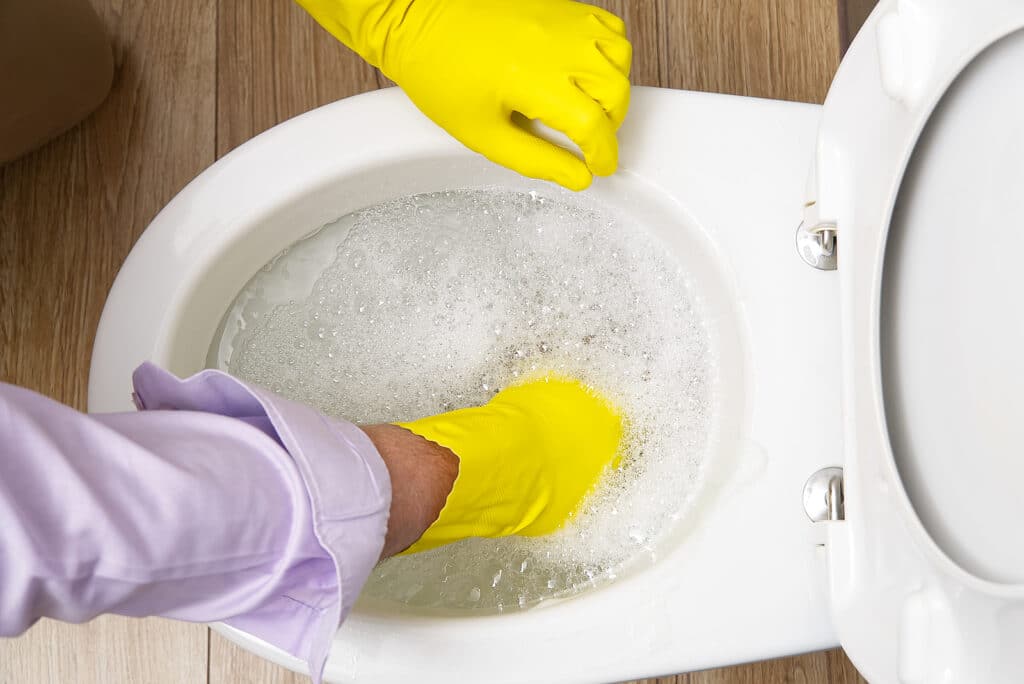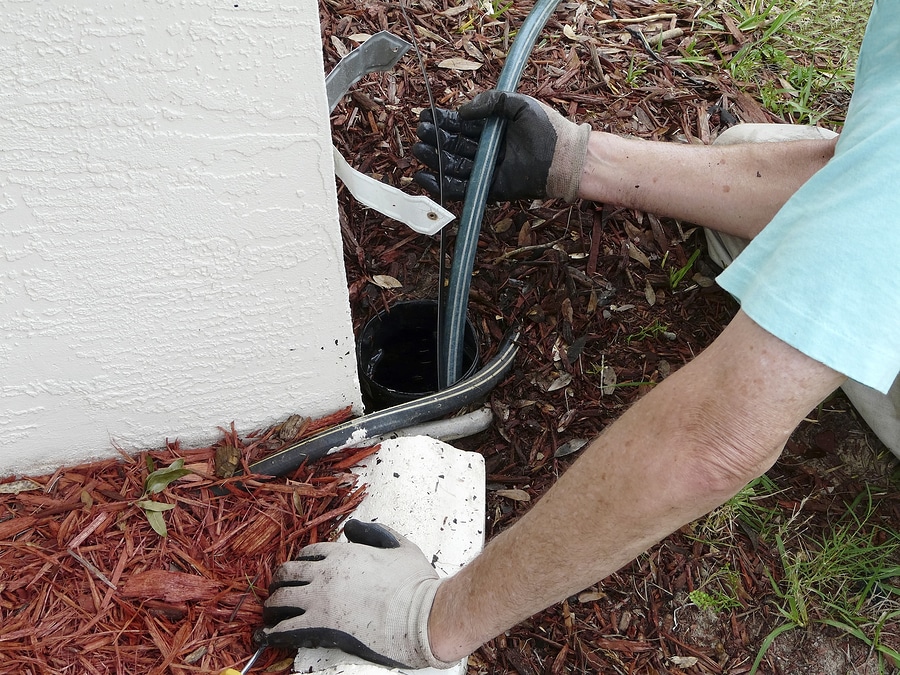Lead Pipes
Do You Have Lead Pipes in Your Home? Water mains in the UK are not…
Read more24 hr Emergency Callout

Blog

A blocked toilet is more than just non-functioning, it’s unpleasant, unsanitary, and requires immediate action to fix. While it can seem at points that nothing you do will shift a stubborn blockage, there are a few household tips that can allow you to return your toilets to full working order.
In this guide from Coastal Drains, we’ll take a look at the causes of blocked toilets, and some simple solutions to help clear even the most badly blocked toilet, including with a plunger and without a plunger.
While there are certain factors of clogged toilets that cannot be easily prevented without a switch to a more fibre-rich diet, there are other everyday causes that can be easily negated or reduced through cleaning and responsible use. Items such as wet wipes, children’s toys, and sanitary products should never be flushed down a toilet. Excess toilet paper can also sometimes cause an obstruction. Toilets should also be regularly cleaned and descaled, as limescale build-ups can cause blockages.
Depending on the type of blockage, a clogged toilet may manifest as slow draining, or a bowl that remains empty after flushing the toilet. If the water level rises upon flushing and doesn’t fall, there is a chance that your toilet is completely blocked. We have a separate guide on our website for fixing a slow draining toilet that you may find helpful.
It is worth double checking that the blockage cannot be flushed through before starting. It could be that a small blockage within the pipes will be loosened by further flushing, particularly if the flush is slow rather than blocked. If your bowl is completely full then do not flush further, as you will risk flooding your bathroom.
Before you start unblocking you should get a pair of rubber gloves, and should also line the floor around your toilet with either old towels or newspaper, in case there is overspill. You can also use a wet-dry vacuum if you have one to clean up any spillages. You should also turn off the flow of water to the toilet before unblocking. This can be done by turning off the stopcock to your property, which will stop all flowing water within your house until you turn it back on.

Make sure you have a toilet plunger rather than a sink plunger. The traditional plunger is intended for sinks, whereas a toilet plunger has a smaller flange inside the cup, designed to fit within the drain opening of your toilet. Your plunger should be entirely underwater, so if your bowl has emptied you should fill it up before using the plunger. Inserting the flange into the drain, completely cover the rim of your drain, creating a vacuum seal within the bottom of your toilet. Push down and pull up with the plunger in place, raising speed and force as you go. This can take upwards of 15 minutes.
While this first round of plunging will hopefully clear the blockage, you may have to repeat the process. If the water has drained fill it back up to the prior level before plunging again. This may end up taking several rounds of plunging if there is a particularly bad blockage. Afterwards, remove the plunger from your toilet and flush it to see if the flow has returned to normal.

An alternative option, ideal for heavier blockages, or blockages that are proving tough to shift, is to use a drain snake. A drain snake is a long, flexible metal cable, designed to fit around the bends of a toilet’s pipes, breaking up or dislodging any blockages it meets. While there are a variety of drain snakes available for sale, when using one within a toilet you should make sure to buy a model with a sleeve of either rubber or a different protective material. Some common drain snakes have metallic tips, which can cause damage to the sewer line of your toilet, so you should be careful to buy a suitable model. Using a wire coat hanger is sometimes recommended online, but you should avoid this for the same reason, it could cause damage to the pipes.
A drain snake can be inserted directly into the drain of a toilet, turning clockwise to extend it through your pipes. Drain snakes can easily traverse through the pipes of your toilet, covering around 8m of pipes. Once you meet a blockage within your waste pipes, stop turning the drain snake and push it forwards and backwards, to break up the blockage. Winding your snake anticlockwise can return it to you. Once removed from your toilet, flush the water through to see if the blockage has been removed. Unlike plungers, drain snakes allow you to establish where the blockage is within your drains, and manually remove it or break it up.
If you’re wondering how to unblock a toilet without a plunger, you have a variety of options involving household chemicals available to you, allowing you to restore a blocked or slow draining toilet without equipment.

For a toilet that is only partially blocked, a bucket of hot water may be enough to dislodge obstructions. Make sure the bowl of your toilet is nearly empty, then pour the bowl from a height. The pressure and heat can help shift blockages within your pipes. Traditional drain cleaners are unlikely to be effective, unless they specify that they work within toilets.
Another great option would be to pour around 150ml of normal washing up liquid into the toilet, making sure to spread it evenly throughout the water in the bowl. Wait for roughly half an hour before filling up a bucket with hot water and pouring that into your toilet from a height. After another ten minute wait, flush your toilet. If you notice movement, even a little, you can repeat the process to clear the blockage.

If you don’t have a plunger to hand, there’s another method they may help unblock your toilet. Bicarbonate of soda, sometimes called baking soda, can be combined with white vinegar for an effective chemical unblocking of a clogged toilet. Start by adding 125g of bicarb to your toilet bowl. Then heat several litres of water to near boiling, mixing it with 125ml of white vinegar in a bucket. Empty the bucket into your toilet, which should generate a lot of foam from the chemical reaction. Wait for half an hour then flush through, which should hopefully clear even stubborn blockages.
While most toilet blockages should be fixable with a plunger, a drain snake, or household chemicals, some obstructions may still prove difficult to shift. In those cases, it might be time to give Coastal Drains a call. Our drain specialists are on call 24/7, ready and willing to identify and solve whatever issues your toilets may be having. Our professional team has a five star rating after more than 600 reviews on Checkatrade, and we are proud to offer a low price guarantee on all of our work.
Contact our team to get your toilet unblocked today.
If you found this article handy, we have other relevant articles within our blog, including the 5 reasons your toilet won’t flush, and a guide to fixing the most common drain problems.